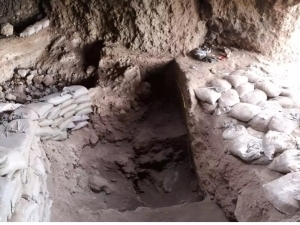By Muhammad Hodiev
Copyright qalampir

During archaeological excavations at Toda Cave in the Boysun mountains of Surkhandarya region, ancient farming tools and wild grain remains were discovered, the Cultural Heritage Agency reported.
The excavations revealed stone sickles, seeds of wild grains, and the labor tools used to process them. According to preliminary assessments by experts, these findings date back approximately 9,200 years. An international team of researchers noted that the discovery indicates the region’s ancient inhabitants practiced hunting and foraging alongside some of the earliest forms of agriculture.
According to Robert Spengler, a researcher at Germany’s Geoanthropology Institute, these findings confirm that agriculture did not develop in a single region but emerged independently in various parts of the world, including Eurasia. The archaeological excavations uncovered not only plant remains but also stone knives, sickles, and other tools used to process wild barley. Traces on these tools indicate they were used for harvesting and processing cereal stalks.
’’This discovery is of great significance, not only for the history of Uzbekistan but also as crucial scientific evidence in the study of humanity’s earliest agricultural cultures,’’ the report stated.



